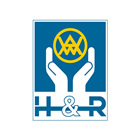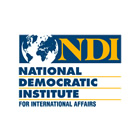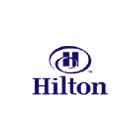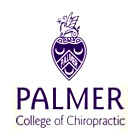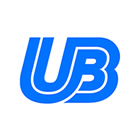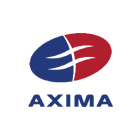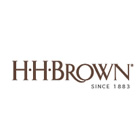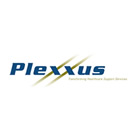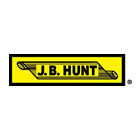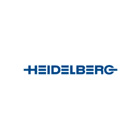
Concerning and Confusing Aspects of Backups
Author: Michael J. Leaver, 2BrightSparks Pte. Ltd.
As most people know, having a backup of your files is crucial. Backup is especially important to businesses. In a 2022 survey, 76% of respondents said that they experienced a severe loss of critical data in the past year, and 45% of them lost data permanently. Despite the importance of backups, many find the process confusing or concerning, which can hinder the implementation of a backup process.
Damaged Backups
Backups can become damaged due to ransomware, faulty backup media (storage media can and does fail), or outdated backup solutions. Simple human error, or sabotage, can also damage or destroy backups. To drastically reduce the chances of this happening, it's recommended to follow the 3-2-1 backup principle: have 3 copies of your data in 2 different locations with 1 being offsite (e.g. in the cloud). SyncBackPro can backup files to most cloud storage services as well as to SFTP and FTP servers. It also supports integrity checking so you can be sure your backups are not damaged. To avoid backing up files damaged by ransomware, SyncBackPro can stop a backup if ransomware is detected. Drive failures can be detected using S.M.A.R.T.
Missing or Failed Backups
Backup software should be set-and-forget, i.e. you should not be running backups manually. They should run on a schedule in the background, without any user intervention, and only informing you of any issues. However, the risk of having automated backups is that they may fail to execute entirely, or partially, without you knowing. SyncBackPro has numerous methods of notifying you if backups fail. By using the free SyncBack Management Service you can monitor remote SyncBackPro installations.
Inaccessible Backups
If you have only one backup, and can't access it during a disaster, then you can't restore your data. This is another reason why using the 3-2-1 backup method is advised. Although a local backup may be vulnerable to ransomware, you still have a remote backup, and have 3 backups to restore from. SyncBackPro stores backup files as-is, meaning no proprietary backup file format is used. If compression and encryption is used then it is industry standard compression and encryption that allows you to use 3rd party tools to access those compressed and encrypted backups. This means you can access your backup files without needing SyncBackPro itself. That is especially important when archiving files, which you may not need to access for years. Hardware and software are constantly changing, meaning proprietary formats can stop access to data in future.
Incomplete Backups
Backup procedures may miss files, either because someone thought they weren't needed or because they never got included in the backup configuration. Making a backup of entire drives is often not practical as the backup becomes unnecessarily large. Using compression can reduce that size, but compression takes time. Large backups make remote backups expensive and impractical. Also, there is no need to backup the operating system or applications, which can take up a large part of the space used on a drive. Operating systems and applications can be re-installed. Only the settings and configurations for applications may need to be backed up. Knowing what to backup can be difficult. Documents, images, databases, virtual machines, etc. are often stored in one known location, which is simple enough to add to your backup. However, extra time should be taken to investigate where your applications are storing your data.
Slow Backups
In some cases, backups are inevitably going to be slow. For example, remote backups are limited by the network bandwidth. If you are backing up large amounts of data then it is going to take time to do any compression, encryption, verification, transmission and storage. The best way to reduce backup time is to only backup what needs to be backed up. SyncBackPro will not backup already backed up files. You can also use Fast Backup to greatly reduce the time it takes to discover what needs to be backed up. If network bandwidth is low then it may be faster to use compression. SyncBackPro can also run multiple backups in parallel, e.g. by using Groups. Multiple threads can be used to send, receive, verify and compress files.
Frequency of Backups
One of the most common backup mistakes is not backing up data frequently enough. If you are automating your backups (which you should) then you can decide how frequent a backup should be. How frequently you backup depends entirely on what data you are making a backup of. Some data may be critical and change frequently, e.g. a database, and so needs a frequent backup. SyncBackPro can use the Volume Shadow Copy service in Windows to make backups of open/locked files without requiring any downtime. Other data may change infrequently, so may only need a backup once per day. With SyncBackPro you can create individual backup profiles and decide what needs to be backed up, how frequently and to where.
Conclusion
In the digital age, data is one of our most valuable assets. The loss of critical data can have severe implications, from disrupting business operations to losing precious personal memories. Therefore, implementing a robust backup strategy is not just an option but a necessity.
While the process may seem daunting, understanding the common concerns and how to address them can make the task more manageable. By leveraging modern tools like SyncBackPro and adhering to the 3-2-1 backup principle, users can safeguard their data against common threats such as ransomware, hardware failure, and human error.
The goal of a backup strategy is not just to create copies of data but to enable quick and reliable data recovery when needed. By investing time and resources in creating a comprehensive backup strategy, individuals and businesses alike can ensure that they're prepared for whatever data challenges they may face in the future.
Noted Customers
© 2003-2025 2BrightSparks Pte. Ltd. | Home | Support | Privacy | Terms | Affiliate Program

